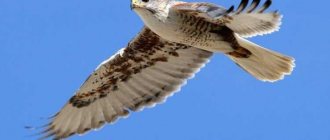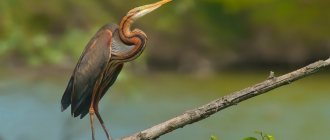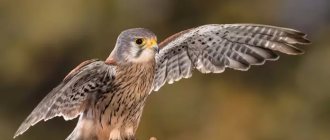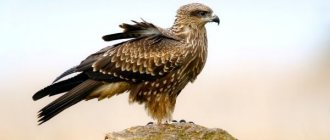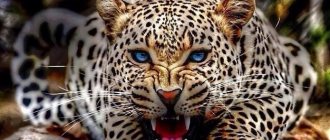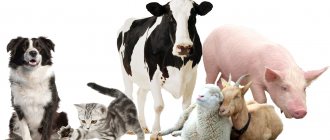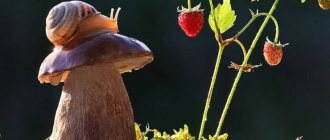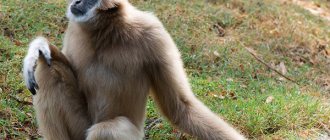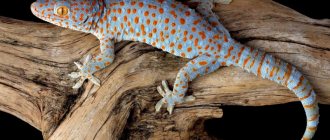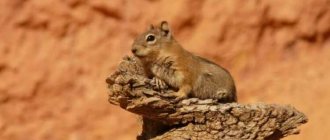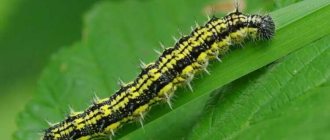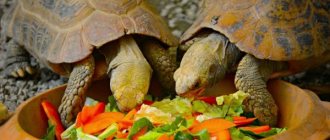Ants can rightfully be considered the most popular representatives of the animal world. They live in almost all geographical latitudes and there is hardly a person in the world who has not seen a living ant in his life, this insect is amazing in behavior, but at the same time typical in its appearance.
According to researchers, the ant population of the earth is the largest among arthropods.
Metamorphoses of evolution and adaptation to various environmental conditions largely determined the behavioral diversity and, in modern language, the superpowers of various species of ants.
Resistance of ants to frost and heat
The survival temperature of ants ranges from +50 to -50 degrees Celsius.
Species of ants living in the Sahara, where the sand heats up to 70 degrees, in addition to a metabolism specially adapted to the heat, are saved by the fact that their backs are covered with silvery hairs, which, by reflecting the rays of the sun, cool the body of the insects.The cold resistance of ants is ensured by special biochemical processes that result in the production of alcohol compounds that act as antifreeze.
Harm
Ants are able to settle in well-heated places. For example, in apartments they prefer to settle in kitchens and bathrooms. They can be located under parquet, tiles, baseboards and in various crevices.
Ants can be dangerous when they crawl through rotten food scraps and other waste and get into food products. They are capable of transmitting dangerous diseases such as diphtheria, typhus and many others. Ants can spoil any food. Fighting them is quite problematic, since they place their nests secretly, and the use of poisons may be ineffective. The bait method works best to control ant colonies.
Pharaoh ants are the most annoying guests
The pharaoh ant (also called the sugar ant) is the most common type of apartment (or house) ant.
The main difference between domestic ants is the tolerance of queen ants to each other, which is not typical for their wild relatives. Thanks to this property, rapid colonization of human housing by ants is ensured.The indestructible squads of these small 1-2 mm red insects, which have flooded the whole world as a result of the development of shipping from India, are capable of infuriating even the most nature-loving owners.
Depending on the conditions, the females live next to each other or hide in different secluded crevices, forming a single community, fed by foraging ants running around in plain sight.
Even the fact that where ants live there are no bed bugs or cockroaches is no consolation, because they themselves are also carriers of harmful microbes.
Distribution area
Ants are an extremely numerous species of insects that have spread to almost all continents and have adapted to different climatic zones. The exception is the harsh Arctic and Antarctica, as well as the cold islands of Iceland and Greenland. It is common for many ants to go into long-term hibernation after the onset of cold weather.
As homes, insects set up anthills for themselves, which are built on rotten wood, soil or small stones. Some ants are able to capture the nests of other insects, and also settle down near human dwellings.
Red forest ants are multifunctional forest defenders
These brown and larger relatives of house ants, which protect forests from pests, loosen the soil, carry tree seeds and build cone-shaped nests up to two meters high, are listed in the Red Book of Endangered Species.
Ants also contribute to the survival of the forest bird population; various beetles and aphids gather and reproduce in anthills, and the ants themselves also become protein food for all types of forest birds.They destroy caterpillars, pupae and adults of pine sawfly, leaf rollers and other insects that eat the bark, roots and leaves of trees in incredible quantities.
In addition, this type of ant is a source of the drug formic acid, which increases the risk of destruction of this population.
How to get rid of ants
Given the huge population of insects and their ability to reproduce, fighting them, as a rule, brings only temporary results. The most effective in killing insects are those based on diazinon and chlorpyrifos.
The first has a nerve-paralytic effect on ants, leads to their death and remains effective for 2-3 weeks. The second one paralyzes the respiratory system and remains effective for up to 2 months. Popular means for controlling insects in a summer cottage:
- "Absolute"
- "A great warrior"
- "Ant-eater"
- "Thunder"
- "Medvetox" and others.
Traditional methods of getting rid of ants:
- Smells. Insects are extremely susceptible to unpleasant odors, so a great way to drive them away is to place strong-smelling herbs (anise, wormwood, sage) or food scraps (herring, garlic, tomato leaves) near the anthill. The cardinal method will be kerosene - they need to water the insects' home, but do not set it on fire.
- Hunting belts. If ants cause damage to trees, the trunks should be wrapped in foil or polyethylene with foam rubber placed inside at a distance of 30-40 cm from the ground.
- Moisture. Insects do not like water, so plants need to be surrounded by holes that regularly receive large amounts of water. If the anthill has already been built, it can be poured with boiling water in several stages; a more humane way is to pour cold water in large volumes.
- Yeast. Add a little honey, sugar and water to the package of yeast. Distribute the gruel into matchboxes and place them near the ants’ homes; soon they will be abandoned by them.
- Lime and carboxylic acid. Mix the substances in equal proportions and treat the trunks of trees and large shrubs.
Small populations of ants located in the garden are unlikely to cause damage to the crop, but will protect it from pests. If there are several anthills and they are quite large, measures should be taken. Despite the usefulness of these insects, being around them is not only unpleasant, but can also become dangerous for humans, especially if there are small children in the house.
Interesting Facts
Ants are one of the most “humanized” representatives of the fauna, and there are good reasons for this: tens of thousands of species of this insect amaze with the variety of behavioral models developed in the process of survival.
It is the behavioral characteristics of various species that have given rise to analogies and corresponding names that are very reminiscent of people’s nicknames.
Thus, Amazon ants steal the larvae of other species, turning the newly hatched young into their slaves.
There is also a type of parasitic ant, non-working very small insects that find shelter and food with their relatives.
There are also many other figurative names that suit not only the appearance of the species, but also reveal its “character”: bullet ants, soldier ants, harvester ants, pygmy ants, thief ants, etc.
Nutrition
The diet of ants is quite varied, but largely depends on the species. As a rule, they eat vegetation and animal remains. Ants feed several times a day.
Dead insects, as well as animal remains and trophic eggs are used as protein food, which serves as building material for the development of larvae. House ant larvae prefer dairy products, egg dishes and gelatin. The queen needs protein food, which must be chewed by the nursing ants.
Ants use honeydew as carbohydrates. It is the juice of the leaves, which is released during temperature fluctuations. In addition, their diet contains honeydew - secretions of insects, in particular aphids. Ants tend to grow aphids for their own purposes. They herd it, raise it and protect it from other ants. After which they are milked and the resulting milk is consumed.
In addition, ants feed on various seeds and plant roots, nuts and mushrooms. These insects are also notable for the fact that they store about 1 kilogram of raw materials for the winter. For example, leaf-cutter ants bring leaves to their anthills, which they then chew and store in specially equipped chambers. After which, mushrooms begin to grow from this foliage, which the ants then use as food.
Photo of an ant
Lifestyle Features
The body of ants is represented by a stepped head and a large rear part. They are also endowed with tentacles, which consist of tips and a long segment. A distinctive feature of their way of life is the organization of their social structure. Only the queen ant can lay eggs. The males, in turn, do nothing but fertilize the queen and then die. Communication between ants occurs through pheromones. The path to the source of food is marked by the aroma from the legs, which is formed by special glands and contains data about the location and quality of the source. Liquid food is transported to the anthill in social stomachs, and solid food is transported whole or in pieces.
Woodworms
Carpenter ants
Quite often, carpenter ants can be seen on trees where they collect honeydew. The insects received this name because they prefer to build their nest in tree bark. By gnawing passages and chambers in it, woodworms cause colossal damage to forestry.
The wood borer has a black body with a slight sheen. Some representatives of this species are distinguished by a light chest and a dark brown head. The insect can reach up to 10 mm in length. Woodworms feed on various small invertebrates and aphid secretions.
The habitats of wood borers are steppes and forest-steppes. They can often be found in oak forests. Working individuals of this species build anthills in rotten stumps and wood of fallen trees, and can sometimes settle in old wooden buildings. Insects descend to the ground only when they need to move to a nearby growing plant.
Bulldogs
Ants of this breed began to be called bulldogs because of their large jaw, thanks to which insects obtain food. They also use it to push off the ground and can jump up to 0.3 m. Adult ants are good swimmers. The larvae eat the food obtained by the workers themselves.
Representatives of this species prefer a tropical climate, so they can only be found on the Australian continent. In appearance, they are very similar to wasps: they have a large body, the size of which reaches up to 30 mm. You can see what a bulldog ant looks like in the photo.
Bulldog ants
Interesting!
The bulldog ant poses a serious danger to humans. The consequence of its bite can be an allergic reaction, and even anaphylactic shock.
Meadow
Ants are medium in size (5-10 mm), which belong to the genus Formica. On the body covered with coarse hairs in the area of the prothorax there is a spot with clear dark edges.
Meadow ants
Adults of this type of ant are very similar to the red forest ants mentioned above. Their habitat is Western Europe, Central Asia, and the Baltic states. On the territory of our country, meadow ants are found in Siberia. Meadows, forest edges and clearings are their favorite habitats.
Meadow ants feed on the secretions of aphids and the bodies of dead invertebrates, but in a state of hunger they can also attack living insects. But this is a fairly rare phenomenon, so meadow ants cannot influence the massive spread of pests.
On a note!
A special feature of meadow ants is their ability to reproduce twice per season. Typically, individuals become active in mating in late May and early September.
Internal structure
The internal organs of the ant, which are located in the abdomen, are also unique in their own way. So the esophagus ends not with the stomach, but with the so-called goiter. Insects use it to collect food. If it is necessary to treat its relative, the ant regurgitates some of the food from this cache. This is especially true for honey ants, which are also called barrel ants.
Nervous system
The insect nervous system includes several interconnected ganglia. Thus, the suprapharyngeal ganglion, which acts as a brain, is responsible for the thinking and behavior of insects. It is much larger in relation to the body. The working ant has a particularly large brain; in females it is slightly smaller, and in males it is the smallest.
Circulatory system
The blood of ants is a clear liquid - hemolymph. It is driven throughout the body by the spinal vessel – the heart. It is a muscular tube that runs along the entire back.
Respiratory system
Respiratory system of tracheal type. The trachea opens outward through stigmas (spiracles), which are located on each abdominal segment (on a stalk at the base of the scale).
Eating
Ants and their larvae are edible and consumed in various parts of the world. The “eggs” (pupae, larvae) of two species of ants from the genus Liometopum serve as the basis for the preparation of a dish known in Mexico as “escamoles”. They are regarded as a form of caviar (or insect eggs) and are sold at a high price, approximately $90 per kg, due to the fact that they are a seasonal and difficult-to-discover resource. In South America (in the Santander department of Colombia), large-bodied ants, known locally as “hormigas culonas” (leaf-cutter ants of the species Atta laevigata), are collected, which are fried alive and eaten.
In various parts of South (India) and Southeast Asia (Myanmar, Thailand), green weaver ant paste is used as a seasoning for vegetable (or meat) curry. Eggs and larvae of weaver ants, as well as their adults, are used in the preparation of Thai yum salad, in a dish called yum khai mod daeng or red ant egg salad (a dish originating from the Isan region in the north). eastern Thailand). Weaver ants are also used as food by the aborigines of Australia (North Queensland). Mexican Indians eat worker ants known as "honey barrels."
Reproduction
All reproduction is carried out in several ways and occurs twice annually.
- During the first method, the queen with a certain number of workers separates from the society and creates a new anthill.
- Another option is a mating flight, in which a female from a foreign anthill is fertilized by several males. Then she lays eggs, from which worker ants are born. Males die after a certain time. Until the workers emerge, the female feeds on the remains of the wing muscles. Females and worker ants are born from fertilized eggs, and males from unfertilized eggs.
These insects are completely harmless, of course, when they do not look after human housing for their place of residence. Therefore, there is no need to simply exterminate them: after all, the ant is an important link in the ecological chain.
Lifestyle
An ant family is formed over many years, as a result of which the number of inhabited anthills can be several million (these are already colonies located near each other over vast territories). Ant society is divided into three castes: females, males and workers. Taking into account the class, a division of labor occurs, and everyone from the queen to the worker must perform their functions at the proper level (if they fail to cope with their duties, the queen is removed and the worker is killed).
It is not difficult to distinguish representatives of the three castes by external characteristics: while females and males have wings, workers (females with an underdeveloped reproductive system) do not. True, after fertilization, the queen’s wings usually either fall off, or she chews them off for herself, but even in this case, she can be distinguished by her enormous size. While queens and workers emerge primarily from fertilized eggs, which contain the two sets of chromosomes they received from the egg and sperm, males emerge from unfertilized ones. Before turning into an adult, the red, red, black ant goes through the stages of egg, larva and pupa.
